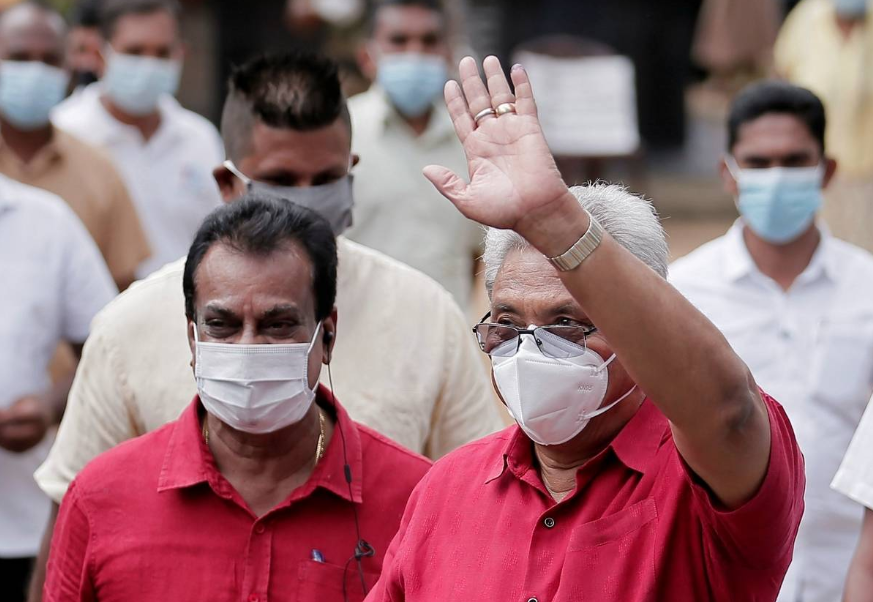
Super win for Rajapaksas' party in Lanka poses fresh challenge to India
The massive victory for the Sri Lanka People’s Front led by the Rajapaksa brothers – Gotabaya and Mahinda – throws up a fresh challenge for India’s foreign policy, already under severe strain following tensions with China and Nepal.

The massive victory for the Sri Lanka People’s Front led by the Rajapaksa brothers – Gotabaya and Mahinda – throws up a fresh challenge for India’s foreign policy, already under severe strain following tensions with China and Nepal.
President Gotabaya Rajapaksa and his brother, ex-president and now prime minister Mahinda Rajapaksa, have a track record of close relationship with China, formed since the final years of the Tamil separatist movement in Sri Lanka.
During the conflict with the Liberation Tigers of Tamil Eelam (LTTE), Mahinda as president and Gotabaya as defence secretary worked closely with China, which helped Colombo by providing arms and ammunition that led to the eventual defeat of the separatists in a violent conflict that ended in 2009 with the killing of Tamil leader Velupillai Pirabakaran and his family.
India, which historically had a close relationship with Sri Lanka and intervened in the Tamil conflict in an attempt to broker a settlement, moved away from its island neighbour following the Indian Peace Keeping Force fiasco in 1989 followed by the assassination of former prime minister Rajiv Gandhi in 1991 by a crack team of the LTTE.
As the conflict raged in Sri Lanka, India pointedly kept out of it despite a clamour from Tamil Nadu for the then Congress-led Manmohan Singh government to intervene and prevent the killing of Tamils there. But the UPA government refused to interfere.
China used the opportunity to stitch up close ties with the Rajapaksa government, exported arms and provided related help which helped the state decimate the Tamil separatists.
After 2009, the Rajapaksa government opened up Sri Lanka for Chinese investment as part of its Belt and Road Initiative (BRI). Among China’s investments include the Mattala Rajapaksa International Airport, worth $190 million and the construction of the Lotus Tower with a $100 million investment. China has loaned Colombo $1 billion for the initial stage of the Central Expressway besides $891 million loan for the Norochcholai Coal Power Plant project.
In addition, among the largest such loans, Lanka is getting $1.4 billion from a Chinese state owned company to construct the Colombo Port City. Already China is involved in the development of the Hambanthota port in a $1 billion deal, as per which the port has been leased to Beijing for 99 years as Lanka has been unable to repay the loan. These investments in Sri Lanka point to a deepening involvement of China in the island nation.
For India, Beijing’s presence in Sri Lanka presents a security challenge considering that relationship between the two are on the edge, especially since news broke in June of Chinese transgressions into Indian territory across the Himalayan Line of Actual Control. Though there was always a latent concern over scores of transgressions in the past, the latest one indicates a new edge to the rivalry.
China is already wooing Nepal into its web. As a likely result of this, the government of K P Sharma Oli in Kathmandu has challenged India’s sovereignty over territory on its western borders adjoining China in what is known as the Kalapani-Lipulekh-Limpiyadhura triangle.
Now that the party led by the Rajapaksas has swept to power in Sri Lanka, it is likely to encourage more Chinese involvement in that country.
As for India, its investments pale in comparison but it is involved in Sri Lanka’s maritime security with Colombo depending on New Delhi for naval training and combined activities. India has also been involved in helping develop maritime infrastructure at the Trincomalee and Colombo ports.
Aware of India’s sensitivity towards Chinese involvement in Lanka and apparently in a bid to placate New Delhi, President Gotabaya last year signed a deal under the already existing Free Trade Agreement (FTA) under which at least 4000 more items could be exported from India to Sri Lanka.
According to official figures, bilateral trade between India and Sri Lanka in 2018 was $ 4.93 billion. Exports from India in 2018 were $ 4.16 billion, while exports from Sri Lanka to India are $ 767 million.
Though there is no issue of edging out India from Sri Lanka, the hard reality is that India has to co-exist with China in a country where there was no such issue a decade earlier. Sri Lanka too has played ball with India, notably by not allowing a Chinese submarine to dock in Colombo following New Delhi’s objections in May 2017, when a more India-friendly president Maithripala Sirisena was in office.
Earlier, in October 2014, when Mahinda Rajapaksa was president, the country had allowed a Chinese submarine to berth in Lanka, leading to consternation in India.
Significantly, when Mahinda was defeated in the previous presidential elections in 2015, there were reports quoting the president accusing India of having had a role in his defeat. Maithripala Sirisena, who succeeded Mahinda, was considered closer to New Delhi.
Gotabaya, when he was elected president last year, triggered concerns in India over his perceived proximity to China. However, Gotabaya in an attempt to assuage the fears made a trip to New Delhi after his victory.
This indicates that Sri Lanka too may not want to ruffle India’s feathers by aligning too closely to China. But, the situation is such that India cannot take Colombo for granted. Now that the Rajapaksa brothers are in power with a super majority in parliament and a two-thirds majority with allied parties, the challenge for India is all that much more to retain Colombo’s goodwill.

